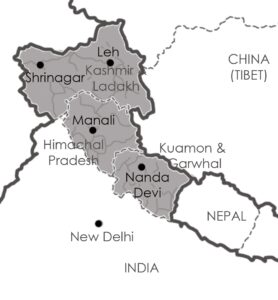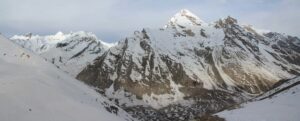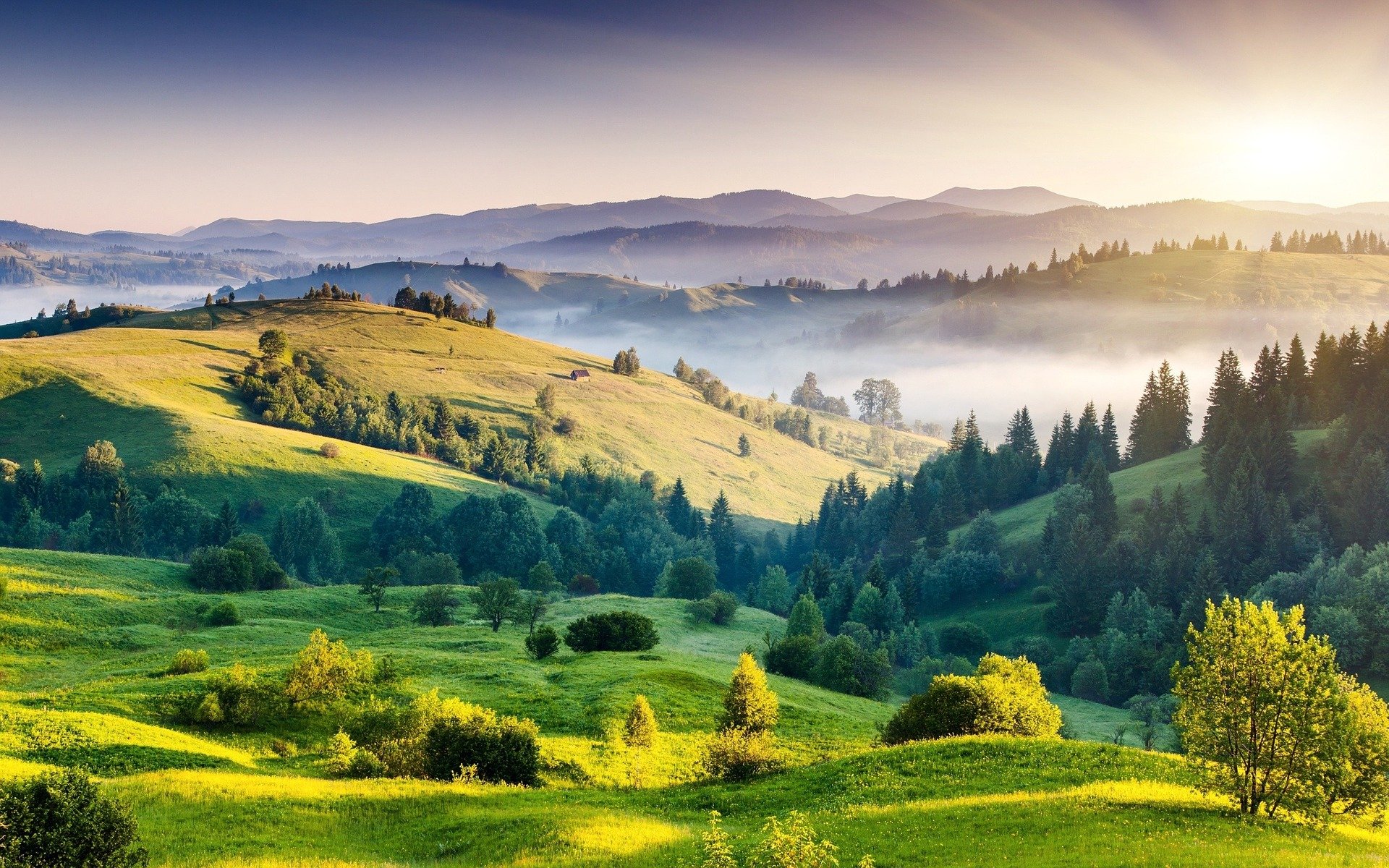Himachal Pradesh Treks
The STC Himachal Pradesh route from Sankri to Manali is classic Indian Himalaya trekking territory! Some of the best hiking routes, most spectacular passes, delightful valleys and all linked with easy access! So it’s no surprise that there are some very busy towns, which means you should consider booking accommodation well in advance of any trip.
Key points:
- Trekking Grade: Grades 4 to 5 (see notes below) – Overall Grade 5
- Duration & distance: About 16 days total
- Gradient: Very steep with some arduous climbs
- Quality of path: Formed and rough track with some obstacles
- Quality of markings: Limited signage with occasional markers
- Experience required: Experienced walkers require navigation skills
- Walking times: More than 7 hours per day some days
- Steps: Steps on some days
- Highest point: 5316m
- Best season: Apr to Oct
- Accommodation: Camping
- Recommended map: The India trekking map – High resolution topographic trekking map of North West India.
Please note that the trails listed can be joined together to create a GHT through-hiking route across Himachal Pradesh – it’s not perfect but it does avoid Inner Line Permit problems!
When to Trek Himachal Pradesh?
The trekking season in North West India, which includes Himachal Pradesh, is traditionally from April to November. So it includes the monsoon months of July, August and September. This means that the best dry months for trekking are May-June and October-November, although many Indian trekking groups prefer the warmer and wetter monsoon months.
Himachal Pradesh Accommodation and Permits
There are very few lodges and places to stay along all the Himachal Pradesh trekking routes, so camping is the only option. Resupplies are also hard to find beyond road heads, so expect to be self-contained for the entire trek.
- The Borasu Pass route requires National Park entry papers and possibly additional paperwork – see below.
- The Bhaba and Pin Parvati routes do not require any permits.
The Himachal Pradesh State Government through their Tourism Development Corporation have an extensive network of accommodation and transport services that are both competitive and offer access to areas that otherwise might be tricky (www.hptdc.in and www.himachal.nic.in). Private transport throughout Himachal is notoriously expensive during peak season, so try to time any visit before the domestic tourists arrive in-force by mid-June.
Himachal Pradesh Route Options
We’ve listed the trails that you can join together to create a STC-route through Himachal Pradesh. Although not perfect but it does avoid Inner Line Permit problems.
Covering much of the heart of the northwest Indian Himalaya, Himachal Pradesh has been the favourite playground for outdoor enthusiasts for centuries. Hunting was the preferred pastime before mountaineering became fashionable in the late 19th century. Over the last 50 years the popularity of the central Kullu – Manali valley has grown exponentially as domestic Indian tourists begin to discover the wonders in their own backyard.
However, despite the annual summer invasion of tourists, there are remote corners to Himachal Pradesh that only the intrepid and determined will ever get to admire. Himachal Tourism proudly boasts more than 270 walking trails in the mid-Himalaya ranges. From them, we’ve listed challenging, hassle-free routes and allow you to immerse yourself in Himalayan grandeur.
Due to the difficulty and commitment level required for these treks we know they will remain relatively untouched. If you are considering them please ensure you are have the necessary skills and experience. The last thing Indian adventure tourism needs is more bureaucracy because of accidents!
Kinnaur, Lahaul, Spiti and Chamba
The district of Kinnaur borders Uttarakhand to the east and is famous for the Kinnaur – Kailash Circuit, a moderate 4-day trek from Lambar to Chitkul around Jorkanden Peak (covered in many guide books and a popular commercial route but requires an Inner Line Permit).
Extending across the northern border of the State with Jammu and Kashmir, the districts of Lahaul and Spiti, offer some excellent trekking, although permits can be a problem here as well. The heart of Himachal is Kullu (including the Manali valley) where there are many short and easy to moderate trekking routes. The relatively remote district of Chamba forms the northwest State border also with Jammu and Kashmir and offers much for the adventurous spirit!

Please contact us for a FREE high resolution topographic trekking map of North West India.
We can send you a Digital Map with detail to 1:25,000 scale of trails throughout Kumaon and Garwhal, Himachal Pradesh, Kashmir, Ladakh and Zanskar.
Borasu Pass via Harkidun
This region is the dividing range between Himachal Pradesh and Uttarakhand and has been a trekking hotspot for over 100 years. The trail to Harkidun is especially popular with trekking groups of all ages as it provides some impressive mountain views along easy trails. Although not as popular as Pin-Parvati near Manali, Borasu Pass receives many trekking groups through the summer months. This trek is best done in June before the crowds arrive.
The most northerly route over the Lamkhaga range is over the Lamkhaga pass but that requires an Inner Line Permit and access is normally permitted during monsoonal months. The southerly extension of the range includes four passes; Borasu (the highest), Kimalay (not crossed for many years), Shinku and Rupin (lowest and most popular) that all lead to the Chitkul – Sangla valley.
Borasu Pass Permits
As these routes are in the Govind National Park you will need to pay for your entry permit and various camping fees at the Park office in Naitwar (a dark and dingy wooden office near the forest rest house). Or through the online Uttarkashi Government website. Also, sections of the Borasu route described here touch on the Inner Line area, but it is possible to do this trek without a ILP. However, you will need to deal with ITBP on Chitkul side, so you will have to one of the following things:
Option 1 – Many trekking groups take a letter on Indian Mountaineering Federation letterhead stating group itinerary, full names, identity numbers (or passport numbers) and visa details (for all in party), plus photocopies of passports and visas and present it to the ITBP above Chitkul.
Option 2 – Alternatively, send someone in advance to the ITBP from Chitkul and personally notify them of when the group will be arriving (within 48 hours is best) – it’s wise to take above details as well just in case.
NOTE: the ITBP staff at Rani Ganta (in the Lamkhaga valley) will possibly stop you and ask for your papers. Tell them to call ahead to the Chitkul post to notify them you are coming.
Access from Sankri (via Naitwar) is a 14-hour drive and Chitkul (via Shimla) is a grueling 22-hours from Delhi.
See the Tour Plan for detailed notes.
Borasu Pass is a Grade 5 trek

Bhaba (aka Bhapa or Tarik La) Pass
The Bhaba (aka Bhapa Pass, Tarik or Tari Khango La) lies at the head of a beautiful alpine valley. The mountains divide the forests of Himachal Pradesh and the arid expanse of Spiti. On the northern side of the pass you follow the Pin river to Mud and can be combined with the more demanding Parvati Pass route to/from Manali.
For those who don’t have the time or energy to attempt the whole route, this leg is a wonderful taste of Himalayan trekking.
NOTE: If you are unacclimatised before attempting this trek you will need to add some rest days or split some days to give your body sufficient time to acclimatise.
The Bhaba Pass is non-technical but does require good knowledge of snow conditions. If you want to continue over Pin-Parvati you will require an experienced team that knows the route as navigation can be tricky (more details of Pin-Parvati see below) and ropes may be needed for crossing glaciers.
Access from Kafnoo (via Shimla) is a bone-jarring 19-hours from Delhi by road and Mudh is two days from Kullu and Manali.
See the Tour Plan for detailed notes.
Bhaba Pass is a Grade 4 trek

Pin-Parvati Pass
The mountains of the Parvati Range boast what is perhaps the best known of the challenging treks in India, the Pin-Parvati Pass. This route is often combined with the Bhaba Pass to create one the best alpine trekking routes in the country. Conveniently close to Manali and boasting one of the longest and most dramatic alpine valleys in India. This trek fully deserves the respect and admiration of all who attempt it, but it’s no casual walk in the park!
The Pin-Parvati pass is notoriously hard to navigate and involves crossing several glaciated areas. You should only attempt this trek with fully equipped and experienced guides and team. This itinerary starts at Mudh and ends in Manali so you can connect with Bhaba Pass (for more details see above).
Access from Mudh, which is two days from Kullu/Manali, where the trail begins or ends depending on your route.
See the Tour Plan for detailed notes.
Pin-Parvati is a Grade 5 trek

-
Destination
-
DepartureNew Delhi
-
Dress CodeMid to High-altitude alpine clothing and camping equipment required
-
IncludedHimachal Pradesh
-
GradeGrades 4-5
-
Idea Date Range01/06/2022
-
Style of TrekCamping





